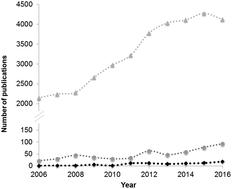Edible oleogels: an opportunity for fat replacement in foods
Abstract
The scientific and industrial communities have been giving great attention to the development of new bio-based materials with potential use in innovative technological applications. Among these materials are the structures with gel-like behavior that can be used in the cosmetic, pharmaceutical and food industries, aiming at controlling the physical properties of the final products. In the past ten years, words like oleogels and organogels have been increasingly used, the existing number of manuscripts and patents being proof of this tendency. In the food industry, oleogels can be used to control phase separation, and decrease the mobility and migration of the oil phase, providing solid-like properties without using high levels of saturated fatty acids as well as to be a carrier of bioactive compounds. In most cases, their main features are related to the reorganization process of gelators after an increase of the temperature, above the melting or glass transition temperature of the materials, known as the direct method, but it is also possible to develop oleogels by indirect methods, such as emulsification and the solvent exchange technique. In the direct methods, the reorganization is able to physically entrap oil leading to different physicochemical properties, the rheological behavior and texture properties being the frequently most studied ones. This review overviews the use of food grade and bio-based structurants to produce edible oleogels, aiming at fat replacement and structure-tailoring. Gelation mechanisms and oil phases used during oleogel production are discussed, as well as the current food applications and future trends for this kind of structure.



 Please wait while we load your content...
Please wait while we load your content...